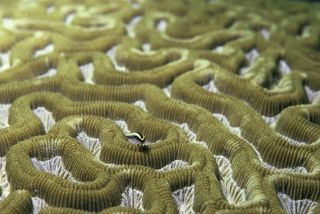Creativity
The Brain Works Through "Openness" to Boost Creativity
Study shows "affective" and "cognitive" components of creativity
Posted March 12, 2014

What does creative thought look like in the brain? With the willing brains of creative people and tools like fMRI that can look inside these brains in real-time, you'd think it would an easy question to answer. The problem is, creative people don't always think creatively—when you stick a creative person in an fMRI tube and prod them to have creative thoughts, the result is a little like throwing electric spaghetti into the air: it's all over the place and nearly impossible to discover which strands in which areas of the brain are responsible for the "novel, useful thought" we commonly call creativity. This has led to overall non-finding, findings like, "the anatomical correlates of creativity is not limited to one lobe of the brain, nor to one hemisphere, nor to the ‘more is better’ notion."
Gosh, all that study of all those brains and the headline is that science knows that creative thought might be anywhere!
But something called "trait creativity" isn't nearly as ephemeral as creative thought. See, there are two ingredients of creativity: thinking skills and personality. Creativity researchers call these the "cognitive" and "affective" components of creativity. There are many thinking skills associated with creativity, for example divergent thinking, which is the ability to brainstorm many answers (as opposed to "convergent" thinking in which you discover one, correct answer). And, of course, there are many personality traits associated with creativity, like norm-doubting, ambition, impulsivity, willing to take risks, autonomy, imagination, hostility, curiosity, and self-confidence (really: a degree of hostility is associated with creativity…cool, eh?).
All this personality gobbledygook is usually squished into the shape of the widely-used Big 5 Personality Test that measures Openness, Extroversion, Conscientiousness, Agreeableness and Neuroticism.
So now finally, here's what's new: rather than looking for the home of creative thoughts in the brain, a team of researchers from the Key Laboratory of Cognition and Personality in Beijing looked inside the brains of 242 college students to see the shapes of a creative personality. Not only that, but they asked a really important question: Can you shape the brain to make it more creative?
What they found (and published this week in the journal Social Cognitive and Affective Neuroscience) is interesting—just as in previous research, the study found the personality traits of openness, conscientiousness and extraversion were correlated with creativity: people with these traits were more likely to be creative, and creative people were more likely to have these traits. And they found one specific structure that was different in the brains of creative people: higher grey matter volume in something called the right posterior middle temporal gyrus (pMTG).
But here's the kicker: of these people with big pMTG's, it was only the people who scored high on the personality trait of openness to new experiences who were more likely to be creative. Does openness grow the pMTG leading to creativity? Or does a big pMTG encourage greater openness leading to creativity? The study admits it doesn’t know. But the researchers write, "Together, our results…suggest that [these two traits] might be associated with increased intuitive thinking and risk-taking actions (reduced response inhibition and novel goal-directed behavior), and disrespect for social customs and rules."
They also write that, "One could infer that the cultivation of the basic personality features of openness to experience in children and adolescents may increase an individual’s trait creativity and, thereby, facilitate divergent thinking and creative achievement."
No matter which is the chicken and which is the egg—whether the brain grows openness or openness grows the brain—this personality trait that allows us to continue to engage the world with new eyes adds to our ability to see new things from the creative recesses of our own brains.


